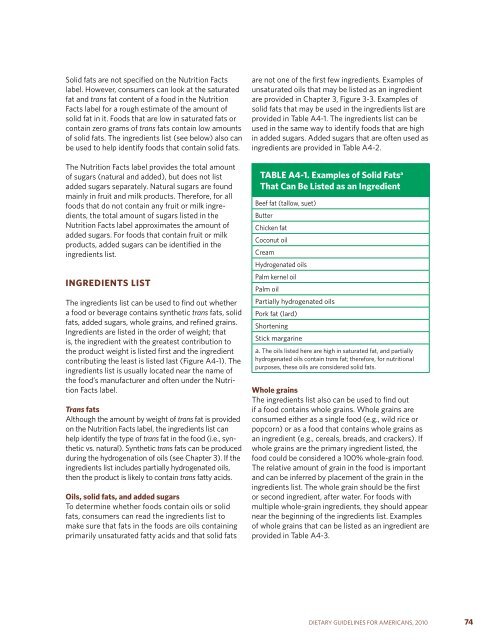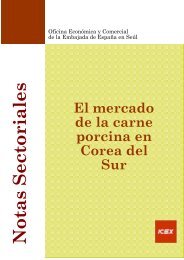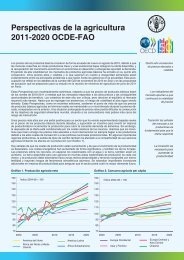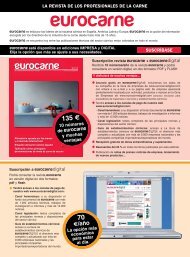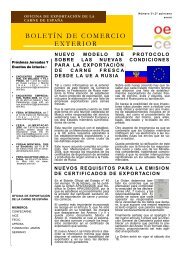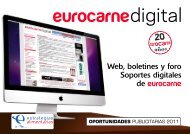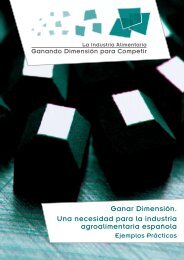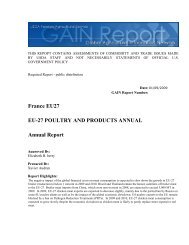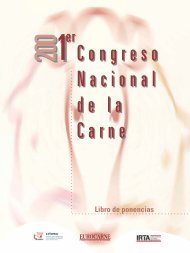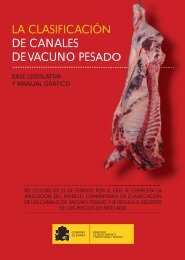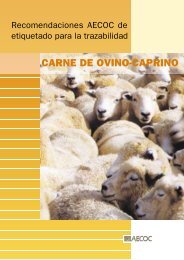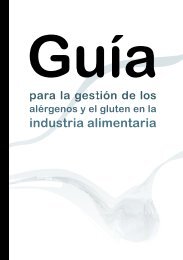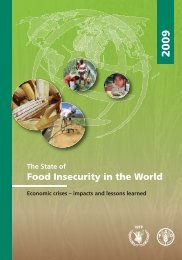Dietary Guidelines for Americans - SchoolNutritionAndFitness.com
Dietary Guidelines for Americans - SchoolNutritionAndFitness.com
Dietary Guidelines for Americans - SchoolNutritionAndFitness.com
- No tags were found...
Create successful ePaper yourself
Turn your PDF publications into a flip-book with our unique Google optimized e-Paper software.
Solid fats are not specified on the Nutrition Factslabel. However, consumers can look at the saturatedfat and trans fat content of a food in the NutritionFacts label <strong>for</strong> a rough estimate of the amount ofsolid fat in it. Foods that are low in saturated fats orcontain zero grams of trans fats contain low amountsof solid fats. The ingredients list (see below) also canbe used to help identify foods that contain solid fats.The Nutrition Facts label provides the total amountof sugars (natural and added), but does not listadded sugars separately. Natural sugars are foundmainly in fruit and milk products. There<strong>for</strong>e, <strong>for</strong> allfoods that do not contain any fruit or milk ingredients,the total amount of sugars listed in theNutrition Facts label approximates the amount ofadded sugars. For foods that contain fruit or milkproducts, added sugars can be identified in theingredients list.ingredients listThe ingredients list can be used to find out whethera food or beverage contains synthetic trans fats, solidfats, added sugars, whole grains, and refined grains.Ingredients are listed in the order of weight; thatis, the ingredient with the greatest contribution tothe product weight is listed first and the ingredientcontributing the least is listed last (Figure A4-1). Theingredients list is usually located near the name ofthe food’s manufacturer and often under the NutritionFacts label.trans fatsAlthough the amount by weight of trans fat is providedon the Nutrition Facts label, the ingredients list canhelp identify the type of trans fat in the food (i.e., syntheticvs. natural). Synthetic trans fats can be producedduring the hydrogenation of oils (see Chapter 3). If theingredients list includes partially hydrogenated oils,then the product is likely to contain trans fatty acids.oils, solid fats, and added sugarsTo determine whether foods contain oils or solidfats, consumers can read the ingredients list tomake sure that fats in the foods are oils containingprimarily unsaturated fatty acids and that solid fatsare not one of the first few ingredients. Examples ofunsaturated oils that may be listed as an ingredientare provided in Chapter 3, Figure 3-3. Examples ofsolid fats that may be used in the ingredients list areprovided in Table A4-1. The ingredients list can beused in the same way to identify foods that are highin added sugars. Added sugars that are often used asingredients are provided in Table A4-2.taBle a4-1. examples of solid fats athat can Be listed as an ingredientBeef fat (tallow, suet)ButterChicken fatCoconut oilCreamHydrogenated oilsPalm kernel oilPalm oilPartially hydrogenated oilsPork fat (lard)ShorteningStick margarinea. The oils listed here are high in saturated fat, and partiallyhydrogenated oils contain trans fat; there<strong>for</strong>e, <strong>for</strong> nutritionalpurposes, these oils are considered solid fats.whole grainsThe ingredients list also can be used to find outif a food contains whole grains. Whole grains areconsumed either as a single food (e.g., wild rice orpopcorn) or as a food that contains whole grains asan ingredient (e.g., cereals, breads, and crackers). Ifwhole grains are the primary ingredient listed, thefood could be considered a 100% whole-grain food.The relative amount of grain in the food is importantand can be inferred by placement of the grain in theingredients list. The whole grain should be the firstor second ingredient, after water. For foods withmultiple whole-grain ingredients, they should appearnear the beginning of the ingredients list. Examplesof whole grains that can be listed as an ingredient areprovided in Table A4-3.DIETARY GUIDELINES FOR AMERICANS, 2010 74


